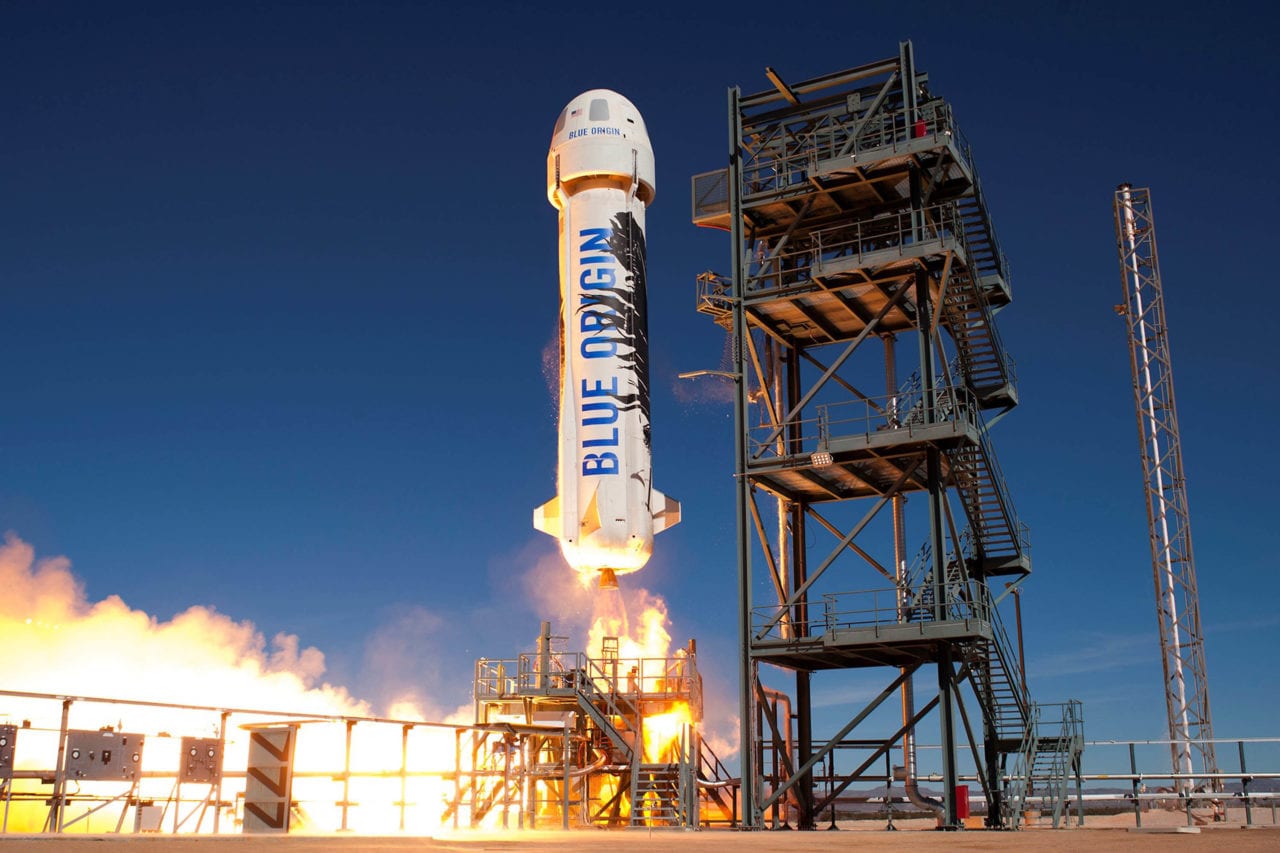
A launch of Blue Origin’s New Shepard rocket. (Blue Origin)
Blue Origin has launched its New Shepard rocket nine times. The first seven, it had airspace issues, according to Audrey Powers, the company’s deputy general counsel.
Speaking at the Air Traffic Controller Association and FAA’s Commercial Space NAS Integration Conference, Powers said Jeff Bezos’ spaceflight company found a lot of unexpected challenges trying to develop a new relationship with air traffic controllers and the FAA’s Office of Commercial Space Transportation (AST).
“This is going to happen again,” Powers said. “In hindsight, it would have been really wise if we had had more pre-flight interaction [with the controllers in Albuquerque…] The bruises that we experienced from the early days of New Shepard can really inform all of us going forward.”
Representatives from the commercial space industry, like those from the traditional aviation industry, agreed that for successful integration of commercial space operations, the launches need to get to the point where they disrupt airspace less than they currently do.
“We’ve closed airspace for hours at a time for days [in a row] at a time, causing people to reroute for something that doesn’t occur. That’s problematic,” said Crag Campbell, CEO of the state-owned Alaska Aerospace. “We cannot be moving international carriers hundreds of miles over Fairbanks way out of their way for a launch that may or may not occur.”
Powers shared a similar sentiment about Blue Origins.
“In the early days, we blocked airspace for six hours, and Albuquerque flipped a switch and the TFR [temporary flight restriction] went on; if you were looking to fly then,” it was too bad, Powers said.
She did, however, say that things have improved as everyone has gotten on the same page and launches have gotten more reliable.
“Now, you don’t have to [stop flights through the airspace] until 30 minutes before… The TFR was in place, but [controllers] were actively routing aircraft through until we were 30 minutes out, and once it was on the ground, we can immediately do that again. We dropped to around 45 minutes of actual no-fly from six hours.”
She said that was possible because the company had a better idea of when its launch would happen and could stay in constant communication with controllers in Albuquerque. It was a painful lesson, though.
“New Shepard was unfamiliar architecture and launching from a private launch site, which isn’t what the industry was used to,” she said. “Blue Origin was learning how to be a range operator. Nobody at Albuquerque had experience with commercial space.”
The combination of increased comfort between the two parties and increased reliability of Blue Origin’s rockets allowed the time of flight restriction to be cut down. Some of that can be institutional knowledge — Powers advocated for a boilerplate agreement that could be used in commercial space situations and adjusted to meet different situations — but some of it is necessarily unique, dependent upon location, individual vehicle architecture, and each group learning how to operate.
While that learning can be painful, Boeing’s director of space access, William Hampton, said it’s crucial to success.
“When Blue Origin was going to launch down there, everyone probably wanted to write a bunch of rules and regulations,” he said. “Prior to Blue Origin’s first flight, those regulations probably would have been wrong.”